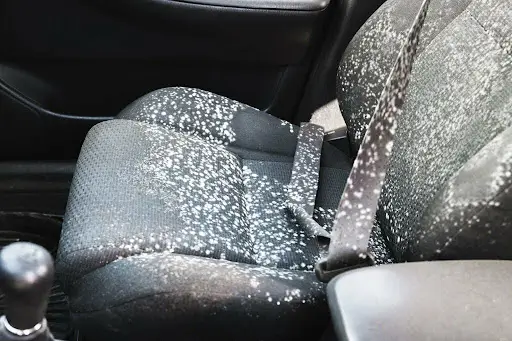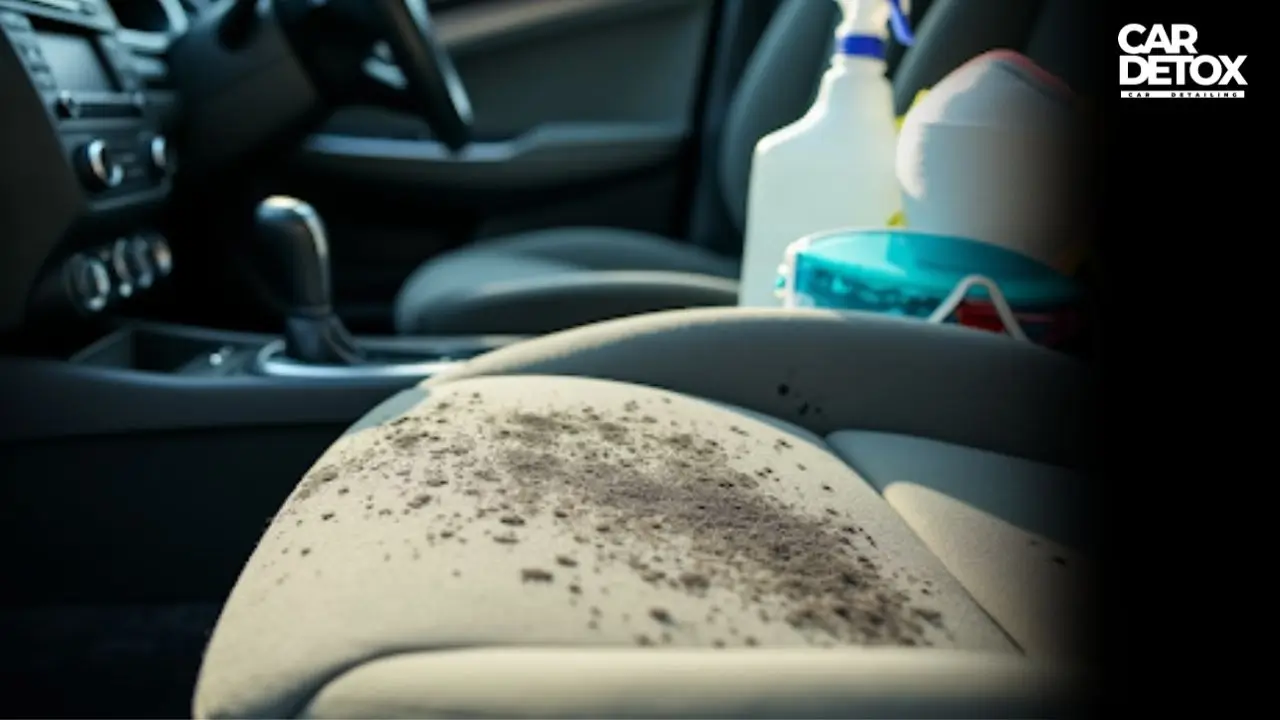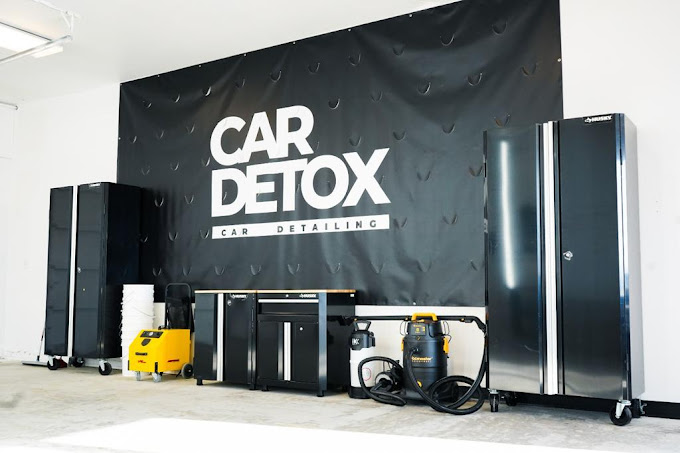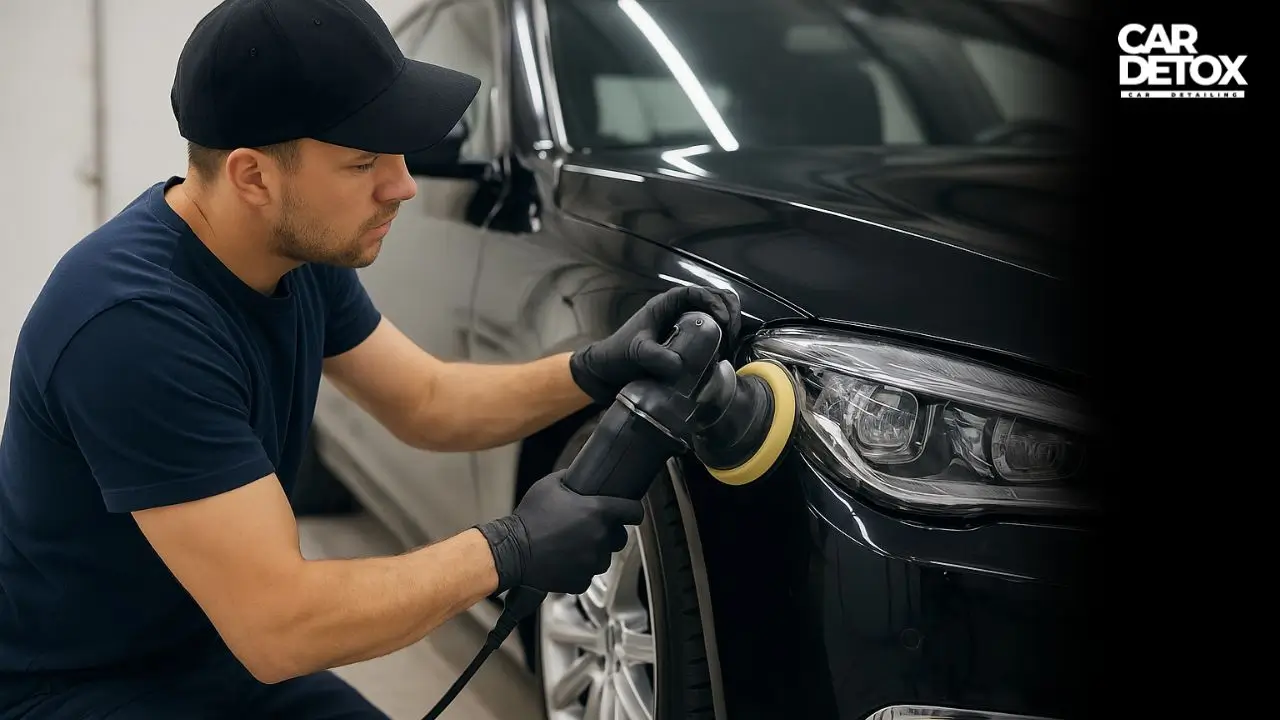Your car's interior can become as hospitable for mold as a rainforest.
My personal battle with car mold treatment taught me some hard lessons. A minor infestation might set you back $200, while severe cases demand professional treatment costing over $2,000. Mold in your car goes beyond cosmetic concerns and triggers serious health issues. These problems include asthma, chronic fatigue, and skin rashes.
Car interior mold treatment requires more than just cleaning - safety comes first. My experience taught me that proper protective gear makes all the difference. NIOSH-approved N95 respirators and specific cleaning techniques help remove mold effectively. This piece contains everything I wish I had known before I started working on my car's mold problem.For residents in Portland and surrounding areas like Tualatin, Sherwood, and Beaverton, Car Detox offers specialized mold removal services and car detailing solutions to tackle even the toughest infestations.
Let's take a closer look at removing mold from your vehicle safely and effectively without risking your health.
Understanding the Health Risks of Car Mold

Mold in your car isn't just ugly—it's a health risk that needs your immediate attention. You need to understand what you're dealing with to treat car mold safely and effectively.
Common types of mold found in vehicles
Your car's interior can host several mold species, each with its own distinct features:
- Cladosporium: This black or green mold has a powdery texture and can trigger allergies and breathing problems
- Aspergillus: The velvety green or yellow patches thrive in damp spots and can affect your breathing
- Penicillium: Blue or green powder-like patches show up in areas damaged by water
- Stachybotrys (black mold): The slimy texture signals serious health risks that need quick action
- Alternaria: Black or dark green patches appear with a wool-like texture
- Fusarium: White or pink cotton-like growths often appear in water-damaged spots
How mold exposure affects your health
Your car's confined space makes mold spores particularly dangerous. These tiny particles float in the air and can quickly cause stuffy noses, runny noses, sore throats, and itchy eyes.
People with breathing issues or weak immune systems face bigger risks. They might struggle to breathe or develop lung infections. Asthma sufferers could experience wheezing, coughing, and chest tightness.
The long-term outlook isn't good either. Extended mold contact might lead to ongoing breathing problems, sinus infections, immune system issues, and sometimes brain-related symptoms like dizziness, headaches, and memory loss.
Recognizing toxic vs. non-toxic mold species
The media has created more buzz than science about "toxic black mold". Stachybotrys chartarum (black mold) might be the most dangerous, but color alone doesn't tell you if it's toxic.
Notwithstanding that, you should remove any mold growth fast. Greenish-black patches usually signal serious water damage and need extra care. So while some molds produce mycotoxins, scientists haven't proven they cause health issues in cars.
Lab testing remains the only way to tell toxic from non-toxic species. That's why you should treat all car mold with equal care during removal. People with allergies, breathing issues, or weak immune systems need to be extra careful around any type of mold.
Essential Safety Equipment for Car Mold Removal
Protect yourself with NIOSH-approved respirators and disposable coveralls. For severe cases, trust professionals like Car Detox, who use advanced gear to handle toxic mold in auto detailing Portland and fleet vehicle detailing
Respiratory protection options
Your lungs need good protection when you remove car mold. CDC recommends using a NIOSH-approved N95 respirator at the very least for any mold cleanup task. This simple protection works well for smaller areas under 10 square feet.
The job might need better equipment if you're working with heavy mold growth or extremely musty vehicles. Here are some upgraded options:
- Half-face respirators with P100 filters that catch 99.9% of particles down to 0.3 microns
- Full-face respirators that give complete protection for areas over 100 square feet
- Powered air-purifying respirators (PAPRs) that work best for severe cases
Respirators with charcoal-impregnated filters help block those unpleasant odors you'll find during car interior mold treatment.
Skin and eye protection gear
Good eye protection stops mold spores from reaching your eyes, which can become breeding grounds for more growth. You'll need non-vented goggles for complete protection—regular safety glasses with open vent holes just won't do the job. Chemical splash goggles give extra protection when you use strong cleaning agents.
Your skin needs proper barriers, so use long gloves that reach your mid-forearm. Choose your glove material based on your cleaning method:
- Natural rubber, neoprene, nitrile, or PVC gloves work with bleach or strong cleaners
- Standard household rubber gloves do the job with mild detergents
Disposable coveralls and gloves
Disposable protective clothing stops cross-contamination and keeps mold off your skin. Here's what works best for car mold cleanup:
- Tyvek or microporous film laminate (MFL) coveralls block spores effectively
- SMS (spunbond/meltblown/spunbond) coveralls offer great particle protection and resist light splashes
- Coveralls with elastic wrists and ankles seal off entry points
These disposable options also keep mold spores from spreading to your home or other vehicles after you finish the job.
Setting up a safe work area
A good workspace makes car mold treatment safe and effective. Start by getting proper ventilation:
- Park your vehicle in a space with good airflow, preferably outdoors
- Open all doors and windows so air moves freely
- Use fans around the vehicle to boost airflow if you're working indoors
You should cover nearby surfaces with plastic sheeting to stop spores from spreading. Keep your kids and pets away from the area until you complete the work.
Get all your safety gear and cleaning supplies ready before you start. This way, you won't need to remove protective equipment halfway through the job.
Step-by-Step Car Mold Treatment Process
- Assessment: Document mold growth and identify hidden areas (under seats, HVAC systems).
- HEPA Vacuuming: Remove spores efficiently—Car Detox’s car detailing services include industrial-grade equipment for deep cleaning.
- Cleaning Solutions: Use vinegar or commercial fungicides. For stubborn cases, opt for Car Detox’s car mold removal treatments.
- Drying: Dehumidify thoroughly to prevent recurrence—mobile car detailing Portland services can handle this on-site.
Original assessment and documentation
The first step is checking the vehicle carefully. You need to look past visible mold spots and check hidden spots like under seats, in the trunk, and around window seals. Taking pictures before you start helps track progress and supports insurance claims. When I checked my car, I found water had leaked through a bad sunroof seal. This created perfect conditions for mold to grow in unexpected places.
Removing and disposing of heavily contaminated items
You should properly throw away any items with severe mold damage. Floor mats, seat covers, and personal items left in the car often can't be saved. Trying to clean these heavily contaminated materials might spread spores through your car. Put these items in sealed plastic bags before throwing them away to avoid spreading contamination.
Hoovering up with HEPA filtration
Using a vacuum with a HEPA filter is a vital step in car mold treatment. These special filters catch tiny mold spores as small as 0.3 microns and stop them from floating in the air again. Before you vacuum:
- Block off the area to contain spores
- Pick the right attachments for each surface
- Clean every spot, including gaps and under seats
Empty the vacuum bag or canister outside after each use and clean the vacuum to prevent contamination.
Applying appropriate cleaning solutions
After removing loose mold, you can apply a cleaning solution. You have several options:
- White vinegar solution (1:1 ratio with water) - kills about 82% of mold species with its acidic properties
- Baking soda - works well on tough spots and neutralizes odors
- Commercial mold removers - have stronger fungicides for bad cases
Scrub affected areas gently with a soft brush after applying your chosen solution. This helps avoid damage to interior materials. Wipe clean with a damp cloth to remove any leftover residue.
Drying and dehumidifying the interior
The last step might be the most important - getting everything dry. Moisture helps mold grow, so getting rid of it stops future problems. You can put a dehumidifier in your car and run it for several hours to pull out extra moisture. You could also park in direct sunlight with open doors to speed up drying. A dry interior gives you the best protection against future mold issues.
Take your time with this process. Missing even small patches of mold can lead to quick regrowth throughout your car.
Effective Products for Car Interior Mold Treatment
While DIY solutions like tea tree oil work for small infestations, extensive mold requires professional-grade products. Car Detox offers mold removal Tualatin and car detailing Sherwood services, using EPA-approved antimicrobial foggers to reach hidden areas.
Commercial mold removers vs. household solutions
Commercial mold removers pack stronger fungicides made specifically for cars. Products like Mold Armor, Concrobium Mold Control, and Chemical Guys Mold Remover Kit have powerful formulas that kill mold at its source instead of just bleaching stains. Household solutions can work surprisingly well too:
- White vinegar mixed with water (1:1 ratio) kills about 82% of mold species thanks to its acetic acid
- Baking soda tackles stubborn spots really well and gets rid of odors naturally
- Non-iodized salt solutions can knock out mild to moderate mold growth
It's worth mentioning that bleach should never touch your car's interior. It damages materials and won't reach deep enough to kill mold roots.
Natural alternatives for sensitive individuals
If you have chemical sensitivities or breathing issues, several natural options can tackle car mold effectively:
Tea tree oil stands out as a natural mold killer that works on many types of mold and fungi. This Australian Melaleuca Alternifolia extract works without harsh chemical smells, but you'll need to dilute it first.
Grapefruit seed extract (GSE) works just as well without the strong smell and can eliminate up to 60 types of bacteria and yeasts. Lemon juice contains 5% acid that fights mold while leaving a pleasant scent.
Product safety ratings and effectiveness comparison
The best products balance effectiveness with safety. Antimicrobial or fungicidal ingredients ensure mold dies completely instead of just surface cleaning. Commercial products with hydrogen peroxide act faster but might damage some interior materials.
Antimicrobial foggers like Concrobium are a great way to get treatment everywhere in your vehicle. They reach hidden spots where mold likes to grow. Remember to test any product on a small, hidden area first to check for damage or discoloration.
Dealing with Stubborn Mold in Hidden Areas
Hidden mold can make your vehicle a constant health hazard even after you clean the surface. The most stubborn infestations lurk in these concealed areas. Your car needs targeted mold treatment approaches.
Treating HVAC systems and air vents
Mold loves to grow in air conditioning and ventilation systems. The evaporator coil collects condensation that creates perfect conditions for growth. You'll notice a musty smell from your AC because bacteria and mold form in the evaporator. Here's how to treat it effectively:
- Find the intake vents near your windshield and spray a specialized HVAC mold cleaner while the system runs on high
- Let the air conditioning system run through all settings (heat, cold, regular vent) so it circulates completely
- Severe cases might need an ozone generator that oxidizes and destroys contaminants throughout the cabin space
You can prevent issues by running your AC compressor a few times during winter. This flushes condensation through the system. Let the system dry by turning off your AC before parking.
Addressing mold under carpets and padding
Your car's carpets and floor padding can hide extensive mold growth, especially after floods or constant leaks. Watch for these warning signs:
- Mold you can see on the carpet's underside
- Musty smells coming from beneath when lifted
- Major discoloration underneath
- Wet spots that won't dry due to saturation
Severe cases need complete removal of carpets and padding instead of surface cleaning. The treatment starts with lifting carpets where possible. Use a HEPA-filtered vacuum really well before you apply antimicrobial solutions to backing materials.
Removing mold from behind panels and upholstery
Moisture gets trapped easily in door panels, headliners, and areas under seats. These spots become ideal for hidden mold. Here's how to tackle these challenges:
- Take out accessible interior parts like seats and trim panels to reach contaminated spots
- Put appropriate cleaners inside door panels and wait briefly
- A vapor steamer (reaching 320°F) melts away mold in fabric and upholstery
- Use microfiber towels to wipe affected areas after steaming
Steam cleaning works great on leather seats damaged by mold. It brings contaminants to the surface so you can remove them easily. The whole ordeal might need professional help when mold spreads behind multiple panels or throughout the upholstery.
Preventing Future Mold Growth in Your Vehicle
- Fix Leaks: Check sunroof seals and AC drains.
- Regular Maintenance: Schedule car detailing Tigard or auto detailing Happy Valley services to keep interiors dry.
- Moisture Control: Use desiccants or Car Detox’s commercial fleet detailing for multi-vehicle protection.
Identifying and fixing moisture sources
The fight against mold starts by finding and fixing water entry points. Your vehicle needs regular checks for leaks in these common trouble spots:
- Sunroof drain tubes often get clogged and leak into the interior
- Door and trunk seals break down and let water seep in
- AC condensate drain tubes can get backed up and create damp spots
- Windshield rubber can crack or shrink after years in the sun
Quick fixes are crucial since even tiny leaks create perfect mold conditions within 24-48 hours.
Regular maintenance practices
Good maintenance habits protect your car from mold problems. Here's what you need to do:
Clean your car's interior really well and remove any food bits or organic materials that mold loves to feed on. Your carpets, floor mats, and upholstery should stay dry. Use a wet/dry vacuum right away if anything spills.
Heat your car at high temperatures for several minutes after using the AC. This simple trick dries out hard-to-reach spots in the system.
Using moisture absorbers and dehumidifiers
Smart use of moisture-control products helps keep humidity levels low:
Put desiccants like silica gel packs, activated charcoal, or store-bought moisture absorbers throughout your car. These work great at controlling humidity, even in closed spaces. You might want to try specialized car dehumidifier bags that keep absorbing moisture for up to 90 days.
Keep your car's humidity below 60% to discourage mold growth.
When to seek professional help
Persistent mold, recurring odors, or health concerns signal it’s time for professional help. Car Detox excels in car smoke removal service, mold removal, and fleet detailing services across Portland, Tigard, and Beaverton. Their mobile car wash Portland team brings expertise to your doorstep, ensuring your vehicle stays safe and spotless.
Conclusion
Car mold treatment needs careful attention to safety and proper techniques. My experience shows that successful mold removal depends on the right protective gear, systematic cleaning, and effective products.
Your safety comes first. The right respiratory protection, gloves, and protective clothing will prevent health issues during treatment. HEPA vacuums and proper cleaning solutions will give complete mold elimination instead of quick fixes.
Prevention plays a significant role after treatment. Simple steps like checking for leaks, keeping humidity low, and acting fast when water gets in will keep your vehicle mold-free. DIY methods work for small problems, but bigger mold issues need professional help. Looking for car detailing in Tualatin? Contact us today or book now for a full mold inspection and treatment.
Don't ignore signs of mold in your vehicle. Quick action stops repairs from getting pricey and protects your health. This knowledge helps you handle car mold problems while staying safe through the process.
For residents in Tualatin, Sherwood, and beyond, Car Detox offers comprehensive solutions—from mold removal to ceramic coating services. Their auto detailing Portland experts use cutting-edge techniques to eliminate odors, sanitize interiors, and protect against future growth. Book a mobile car detailing Portland service today and breathe easy in a mold-free car!
FAQs
Q1. What is the most effective method for removing mold from a car?
Steam cleaning is highly effective for mold removal in cars. The high-temperature vapor penetrates surfaces, killing mold and forcing it to the surface for easy removal. This method is particularly useful for treating upholstery, carpets, and other porous materials.
Q2. Can mold be completely eliminated from a vehicle?
While complete mold elimination can be challenging, it is possible with thorough treatment. A mixture of white vinegar and hot water or baking soda can be effective. For stubborn cases, a solution of water and color-safe bleach may work, but always test it on an inconspicuous area first to avoid staining.
Q3. What is the average cost of professional mold removal for a car?
Professional mold removal for a standard-sized vehicle typically costs between $300 to $500, though prices may vary depending on the extent of the infestation and the detailing service's location. More severe cases may incur higher costs.
Q4. Is mold in a car dangerous to health?
Yes, mold in a car can pose significant health risks. It can release toxic spores that may cause respiratory issues and other health problems when inhaled. This is why proper safety precautions, including wearing protective gear, are crucial when dealing with car mold.
Q5. What are some effective ways to prevent mold growth in a car?
To prevent mold growth, regularly clean your car's interior, fix any leaks promptly, use moisture absorbers or dehumidifiers, and ensure proper ventilation. After using the AC, run the heater for a few minutes to dry out the system. Keep humidity levels below 60% inside the vehicle to discourage mold growth.
Our Popular Services
Car Detailing Services | Ceramic Coating Services | Pet Hair Removal Services | Mobile Auto Detail Services Happy Valley | Car Detailing Services in Tualatin
Find Us On Map
Car Detox - Auto Detailing Services
Book An Appointment
Read More on
How Long Do Interior Ceramic Coatings Last?
Is Ceramic Coating Better Than Wax?
How to Find the Best Ceramic Coating Installer Near Me
How long does ceramic coating take to cure?
Revive your ride anytime, anywhere
Schedule AppointmentQuestions? Call us now!






